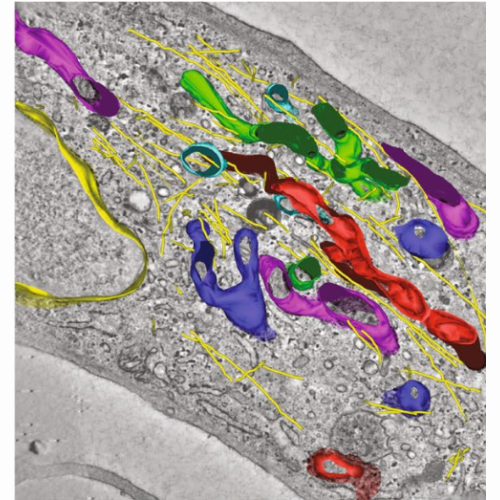GBF1 and Arf1 interact with Miro and regulate mitochondrial positioning within cells.
The spatial organization of cells depends on coordination between cytoskeletal systems and intracellular organelles. The Arf1 small G protein and its activator GBF1 are important regulators of Golgi organization, maintaining its morphology and function. Here we show that GBF1 and its substrate Arf1 regulate the spatial organization of mitochondria in a microtubule-dependent manner. Miro is a mitochondrial membrane protein that interacts through adaptors with microtubule motor proteins such as cytoplasmic dynein, the major microtubule minus end directed motor. We demonstrate a physical interaction between GBF1 and Miro, and also between the active GTP-bound form of Arf1 and Miro. Inhibition of GBF1, inhibition of Arf1 activation, or overexpression of Miro, caused a collapse of the mitochondrial network towards the centrosome. The change in mitochondrial morphology upon GBF1 inhibition was due to a two-fold increase in the time engaged in retrograde movement compared to control conditions. Electron tomography revealed that GBF1 inhibition also resulted in larger mitochondria with more complex morphology. Miro silencing or drug inhibition of cytoplasmic dynein activity blocked the GBF1-dependent repositioning of mitochondria. Our results show that blocking GBF1 function promotes dynein- and Miro-dependent retrograde mitochondrial transport along microtubules towards the microtubule-organizing center, where they form an interconnected network.

- Sci Rep. 2018 Nov 20;8(1)
- 2018
- Cell Biology
- 30459446
- PubMed
Enabled by:
